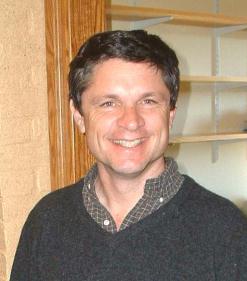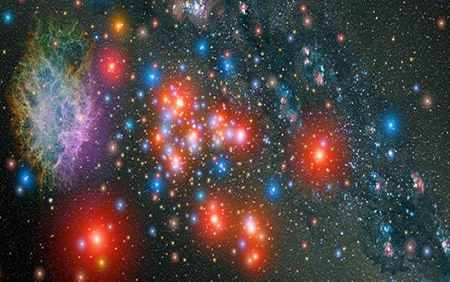Connections Through Time, Issue 6: January – March 2000
Can the reality of consciousness be included in a fundamental theory of our universe? Physicists recognize that superstring theory is not intended to be a theory of “Everything” as often characterized in the popular press. It is, however, a powerful unifying theory that might explain some very fundamental aspects of our universe in a deeper and potentially far-reaching manner. For example, the idea that there are more “dimensions” than the 3-space and 1-time possibly opens the way for consciousness to be included in an expanded theory that accounts for the scientific measurements of precognition and other intuitive realities.
The avenue is open for a truly unifying model that treats time in a very different fashion. Here are some quotes from an article by K.C. Cole, Science Writer, in the Los Angeles Times, 16 November 1999, entitled, “Time, Space Obsolete in New View of Universe”.

“The history of physics,” says Harvard physicist Andrew Strominger, “is the history of giving up cherished ideas.”
No idea has been harder to give up, however–for physicists and laypeople alike–than everyday notions of space and time, the fundamental “where” and “when” of the universe and everything in it.
Einstein‘s unsettling insights more than 80 years ago showed that static space and fixed time were flimsy facades, thinly veiling a cosmos where seconds and meters ooze like mud and the rubbery fabric of space-time warps into an unseen fourth dimension. About the same time, the new “quantum mechanical” understanding of the atom revealed that space and time are inherently jittery and uncertain.
Now, some physicists are taking this revolutionary line of thinking one step further: If their theories are right, in the words of Edward Witten of the Institute for Advanced Study in Princeton, space and time may be “doomed.”
Concurs physicist Nathan Seiberg, also of the institute: “I am almost certain that space and time are illusions. These are primitive notions that will be replaced by something more sophisticated.”
I’ve been in physics for 35 years, and this is the first time I’ve felt I’m involved in a scientific revolution,” said Stanford physicist Leonard Susskind. “In the last five or six years, I really have the feeling we’re doing something as crazy, as interesting, as new as the revolution that Einstein wrought.”
“That means . . . space-time is an uncertain concept, so you’ve lost your firm footing,” said Strominger. “And that is a deep conceptual issue we have not yet come to grips with.”
Now string theory appears to be propelling this evolution one drastic, perhaps inevitable, step further.
“The notion of space-time is something we’ve cherished for thousands of years, and it’s clearly something we’re going to have to give up,” said Strominger.
Black holes, said Princeton physicist John Archibald Wheeler, “[teach] us that space can be crumpled like a piece of paper into an infinitesimal dot, that time can be extinguished like a blown-out flame, and that the laws of physics that we regard as ‘sacred,’ as immutable, are anything but.”
“When we talk about space and time, we think there is something there, and we live in it,” said David Gross, director of the Institute for Theoretical Physics. The idea that space and time might be illusions, he said, “is very disturbing. Where are we? When are we?”
“The real change that’s around the corner [is] in the way we think about space and time,” said Gross. “We haven’t come to grips with what Einstein taught us. But that’s coming. And that will make the world around us seem much stranger than any of us can imagine.”
The universe is stranger, more mysterious, than mathematical theories can currently explain. The models don’t even mention many significant aspects of our universe, e.g., consciousness. The Eastern views of the universe (e.g., Buddhism, Hinduism, Taoism) have developed over thousands of years based on the experiences and teachings of their “scientists” using consciousness itself to explore the inner spiritual self. The Eastern models do not use mathematics and they are not designed to predict quantitative data about the outer physical world. Nevertheless, their models have much to teach us and the challenge is to incorporate this wisdom into physics theories and worldviews.
Eastern world view essence is unity and interrelation of all things and events. – the basic oneness of the world – Brahman, Dharmakaya or Tao.
We know we are conscious beings with a spirit that somehow transcends the material world. We know that we think, feel, and experience intuition. Science, Western science, has shown that consciousness can gather information via remote viewing and precognitively. It seems pretty clear that a synthesis of some sort is necessary between the Western and Eastern world views, or paradigms, concerning reality.
Peter Russell writes about consciousness and a new superparadigm:
… consciousness cannot be so easily sidelined, science has made various attempts to account for it. Some have looked to quantum physics, some to information theory, others to neuropsychology. But the failure of these approaches to make any appreciable headway into the problem of consciousness suggests that they may be on the wrong track. We may need to challenge some of our most fundamental assumptions about the nature of reality. New paradigms emerge because they make sense of apparently conflicting observations. We might expect the same with a new superparadigm, though on a grander scale. The synthesis that emerges could turn out to be much more than an integration of diverse theories within the prevailing scientific model. We could see the synthesis of the seemingly incompatible worlds of science and spirit in a radically different worldview — not so much a larger umbrella as a new umbrella.
The om or (aum) symbol is closely related to all the sounds (how about “string vibrations”) in the universe. More info on the meaning of “om” can be found here and by clicking on the om graphic.
Related articles






